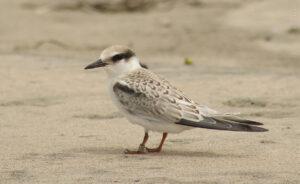Our conservation work at Laguna Ojo de Liebre began more than 20 years ago. It is a natural site of enormous extension, with a lagoon complex of more than 163,000 hectares that has several characteristics of ecological interest. One of them is the annual visit of 20,000 gray whales (Eschrichtius robustus) which migrate every year from the Arctic to have their calves here.
Laguna Ojo de Liebre is one of three major sanctuaries that receive the annual migration of these cetaceans, along with Laguna San Ignacio and Magdalena Bay. After traveling in groups for months over 12,000 kilometers, the whales find in the temperate waters of Baja California a safe place to raise their calves, which are born measuring 4.5 meters long and weighing half a ton.
The presence of the Gray Whale encouraged the Mexican government to legally preserve the breeding sites. As a result, in 1972, Laguna Ojo de Liebre was declared a sanctuary. In 2004 it was added to the list of Ramsar Sites, which catalogs wetlands of international importance.
On the other hand, this vast lagoon complex receives more than 250,000 shorebirds annually. As Pronatura Noroeste, we carry out bird monitoring tasks in the wetlands of Guerrero Negro-Laguna Ojo de Liebre, to know the population status of species such as the Red Knot (Calidris canutus), the Red-breasted Sandpiper (Limosa fedoa) and the Short-billed Curlew (Limnodromus griseus). We carry out the marking of birds with flags to know their migratory connectivity, in collaboration with various organizations. We also carry out the marking of birds with radio transmitters, biologgers and the use of Motus stations to know the movements of birds in detail.
In addition to the monitoring work, our experts carry out social awareness tasks to bring about a change in the behavior of local residents. This includes campaigns related to waste management by the inhabitants of Guerrero Negro, especially around the El Vizcaino Shorebird Refuge.
On the other hand, Pronatura Noroeste is pioneer in studying the imminent effects of climate change on coastal ecosystems of Guerrero Negro. For example, the subtle rise in sea level as a result of global warming threatens to flood coastal areas of the lagoon, where thousands of shorebirds spend the winter. With this information, Pronatura Noroeste is developing new strategies to increase the resilience of these coastal ecosystems to benefit both birds and people.
In addition to Cornell University, the Autonomous University of Baja California (UABC), the Autonomous University of Baja California Sur (UABCS), the University of Massachusetts, the El Vizcaino Biosphere Reserve, the National Commission of Natural Protected Areas (CONANP), and Exportadora de Sal are also collaborating in the development of the Master Plan.
Many actions are needed to conserve the ecosystems and species in Laguna Ojo de Liebre. Join this effort and be part of this beautiful environmental story.
















